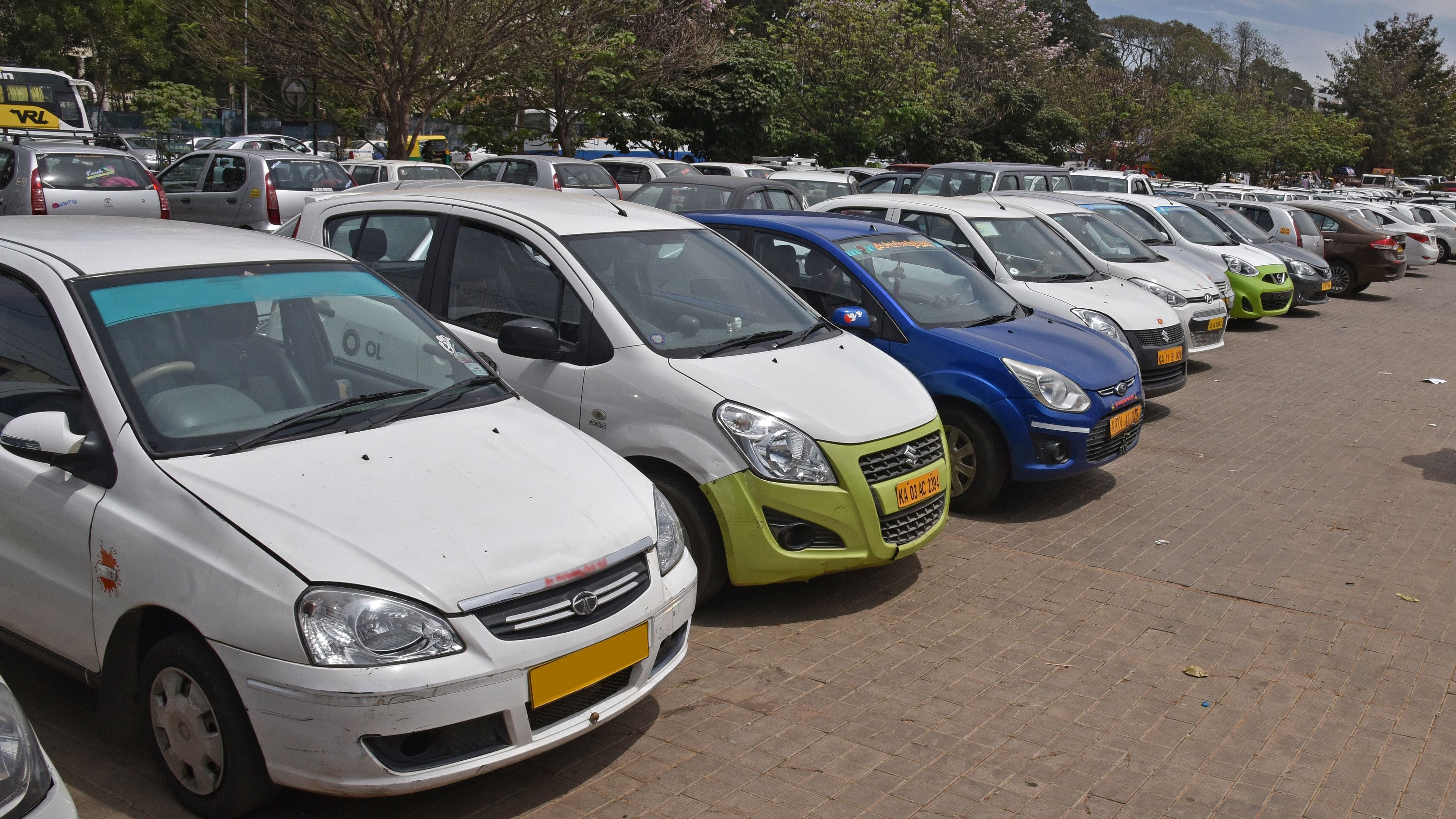
The new fare structure categorises cabs, whether they are city taxis or those attached to ride aggregators, into three based on their purchase price.
Credit: DH File Photo
Bengaluru: The uniform fare structure for all cabs plying within Karnataka will come into force in early March, according to the Transport Department.
On February 3, a state government notification categorised all cabs plying within Karnataka, whether they are city taxis or those attached to ride aggregators such as Ola, Uber and Rapido, into three based on their purchase price.
The notification was published in the government gazette on February 5.
An official source in the Transport Department said the fares would come into force a month after the publication of the gazette notification. If ride-hailing firms fail to comply with the fare structure, the department will check cabs and impose a penalty, he said.
The base fare (first four kilometres) for a cab costing up to Rs 10 lakh is Rs 100. For every subsequent kilometre, it's Rs 24. For cabs costing Rs 10-15 lakh, the base fare is Rs 115 and for every subsequent kilometre, it's Rs 28. The base fares for cabs costing more than Rs 15 lakh are Rs 130 and 32, respectively.
The government has also stipulated luggage, waiting time and night-time charges. While taxi drivers/aggregators can collect GST and tolls from passengers, they cannot levy any per-minute charges.
The previous fares, notified in 2021, contained a flexi-fare structure that allowed cab operators to charge anything within a specific band. This has been removed.
Ola and Uber operate without a licence in Karnataka because their licences expired in 2021. They have challenged the Karnataka On-demand Transportation Technology Aggregators Rules, 2016, and the high court has restrained the government from taking coercive action against them.
The Transport Department official insisted that the stay order wouldn't come in the way of enforcing the new fare structure.
In a letter to Transport Minister Ramalinga Reddy on February 14, the Internet and Mobile Association of India (IAMAI), an industry body representing the digital services industry, said the introduction of flat fares, with no room for dynamic pricing, would have a "chilling impact" on Karnataka’s mobility ecosystem.
"The notification overlooks the demarcation between city taxis used for street ride-hailing and app-based operators," Chitrita Chatterjee, Associate Vice President & Head of Public Policy, IAMAI, wrote.
According to him, web-based transportation aggregation companies are different and more tech-enabled than normal street ride-hailing. He said aggregator taxis should not be subjected to identical fares as traditional taxis. These platforms provide more convenience and facilities to the end customer as well as to drivers by providing a technology platform consisting of doorstep pick-up, safety features, customer grievance redressal mechanism, GPS tracking, digital payment options, insurance and other enhanced features.
Stating that dynamic pricing is a well-established practice, the IAMAI said rates were set by the platform’s algorithm, which "adjusts fares based on several variables, such as time, distance, traffic conditions, and the current rider demand and driver supply".
"The elimination of dynamic pricing severely undermines the livelihoods of drivers who previously relied on the flexibility it provides during peak hours. This decision also discourages them from catering to high-demand periods, potentially resulting in a significant drop in service availability. In the absence of a flexible pricing regime, a significant portion of drivers may opt out of providing trips during peak hours leading to longer wait times for riders. For instance, in bad weather conditions, without flexible pricing drivers may not be sufficiently incentivised to provide their services... The new fare model may result in long-distance trips becoming more expensive for consumers," Chatterjee wrote and requested the minister to restore dynamic pricing.
Reddy said a delegation of ride-hailing firms had met him and asked that they be treated differently. "I asked them to give a representation. I'll look into it and take a decision," he told DH.